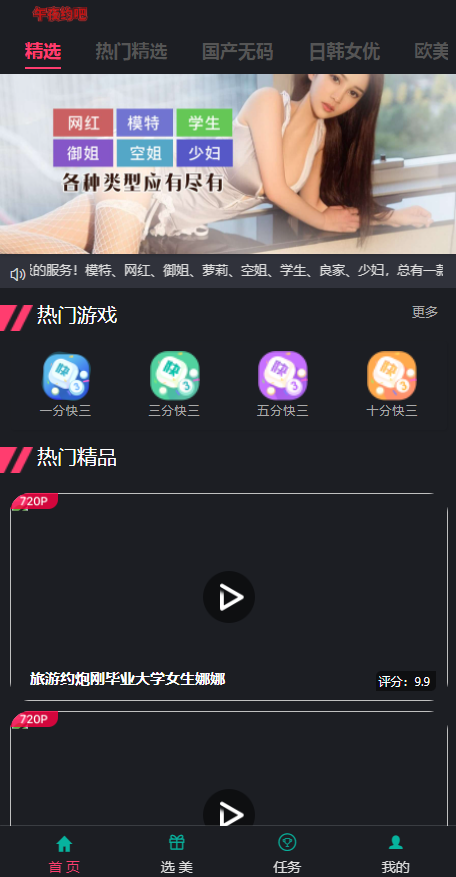【指定app抓取】数据的使用频率
In the modern digital age, apps have become an integral part of our daily lives, serving as tools for communication, productivity, entertainment, and more. However, one critical aspect often overlooked by users is how frequently their data is utilized. Understanding the frequency and patterns of data usage is essential, especially in the context of 【指定app抓取】数据的使用频率, as it allows us to gauge the broader implications on privacy, user experience, and app efficiency.
The Importance of Data Usage Analysis
Apps collect data for various purposes, ranging from improving user experience to personalizing content and targeting advertisements. The frequency with which data is accessed or shared can have significant implications:
1. User Privacy Concerns:
High-frequency data usage can pose risks to user privacy. If an app accesses sensitive information repeatedly without clear consent, it could lead to unauthorized data breaches or misuse.
2. Resource Consumption:
Frequent data usage may result in increased battery drain, higher mobile data costs, and reduced performance of devices. This can lead to user dissatisfaction and, in some cases, app uninstallation.
3. Regulatory Compliance:
Apps must adhere to regional data protection laws, such as GDPR in Europe or CCPA in California. Monitoring 【指定app抓取】数据的使用频率 ensures compliance and avoids potential legal repercussions.
Methods for Tracking Data Usage Frequency
To gain insight into how apps utilize user data, various methods can be employed. These approaches can be used by both developers for optimization and by users to safeguard their privacy.
1. Network Traffic Analysis
By analyzing network traffic, developers and users can track how often an app sends or receives data. Tools such as Wireshark or Fiddler allow detailed monitoring of data packets, offering insights into app behavior.
2. In-App Analytics
Developers often integrate analytics platforms, such as Google Analytics or Firebase, to monitor data usage patterns. These tools provide a breakdown of user interactions and the frequency of data transmission.
3. Permissions Audits
Regular audits of app permissions help identify which apps are accessing data unnecessarily. Both iOS and Android platforms now offer settings to review and restrict app permissions.
4. Third-Party Monitoring Apps
Specialized tools, like GlassWire or NetGuard, help users track data usage on their devices, revealing how often specific apps interact with their servers.
Case Studies of Data Usage Frequency
To understand the real-world implications of 【指定app抓取】数据的使用频率, let's examine a few prominent examples:
Facebook has faced criticism for its data usage practices. Studies have shown that the app frequently accesses user data, including location and browsing history, even when not in active use. This high-frequency data access has sparked debates about user privacy and led to regulatory scrutiny.
TikTok
TikTok, a widely popular app, uses data frequently to personalize content for users. While this enhances user engagement, concerns about data security and frequent server communication have raised alarms in certain regions.
Fitness Tracking Apps
Apps like Fitbit and Strava collect health data continuously to provide real-time updates and insights. While beneficial for users, the frequent access to sensitive health information underscores the importance of robust security measures.
Balancing User Experience and Data Privacy
Developers face the challenge of balancing data usage frequency with user experience and privacy. Frequent data access is often necessary for providing seamless functionality, but it must be handled responsibly.
1. Transparency:
Apps should clearly communicate their data usage policies, explaining why data is accessed and how often.
2. Minimization:
Developers should adopt data minimization practices, ensuring only essential data is collected and accessed.
3. User Control:
Providing users with control over data access, such as toggle options for permissions, can build trust and improve satisfaction.
The Role of Artificial Intelligence in Optimizing Data Usage
Artificial Intelligence (AI) plays a critical role in managing 【指定app抓取】数据的使用频率. Machine learning algorithms can analyze user behavior to predict when data access is necessary, reducing unnecessary interactions. For instance:
- Smart Caching:
AI can cache frequently accessed data locally on devices, minimizing the need for repeated server communication.
- Anomaly Detection:
AI can detect unusual patterns in data access, identifying potential security breaches or inefficiencies.
- Personalization Optimization:
By analyzing user behavior, AI ensures that data usage is tailored to individual preferences without excessive frequency.
Challenges in Monitoring and Regulating Data Usage
Despite advancements in technology, monitoring and regulating 【指定app抓取】数据的使用频率 remains challenging:
1. Technical Complexity:
The vast array of devices and app ecosystems complicates the tracking of data usage patterns.
2. Lack of Standardization:
There is no universal framework for reporting or auditing app data usage, leading to inconsistencies.
3. Evolving Threats:
Cybersecurity threats are constantly evolving, requiring apps to adapt their data protection strategies continuously.
Future Trends in Data Usage Monitoring
As technology advances, new tools and methodologies for analyzing data usage frequency will emerge. Some anticipated trends include:
- Blockchain for Transparency:
Blockchain technology can provide immutable records of data transactions, enhancing transparency.
- Real-Time Monitoring:
Enhanced real-time monitoring tools will empower users to understand and control their data usage better.
- Stronger Regulations:
Governments worldwide are likely to implement stricter laws to oversee app data usage practices.
Conclusion
Understanding 【指定app抓取】数据的使用频率 is crucial in today’s data-driven world. Whether you are a developer aiming to optimize app performance or a user concerned about privacy, tracking and managing data usage frequency offers invaluable insights. By fostering transparency, embracing AI solutions, and adhering to ethical data practices, the tech industry can strike a balance between innovation and user trust, paving the way for a more secure and efficient app ecosystem.

